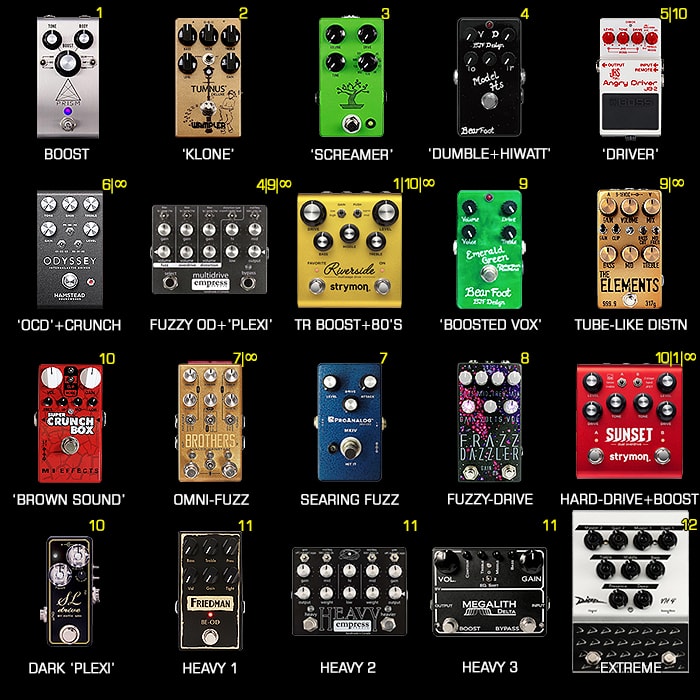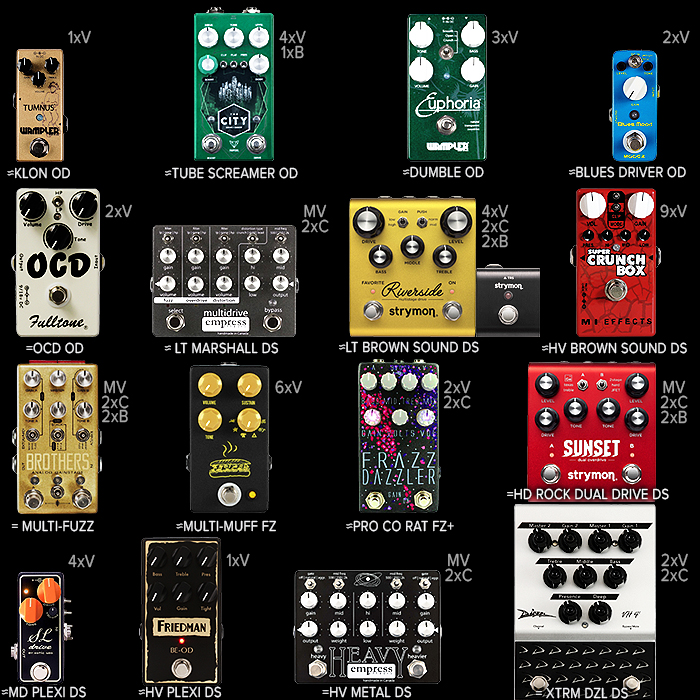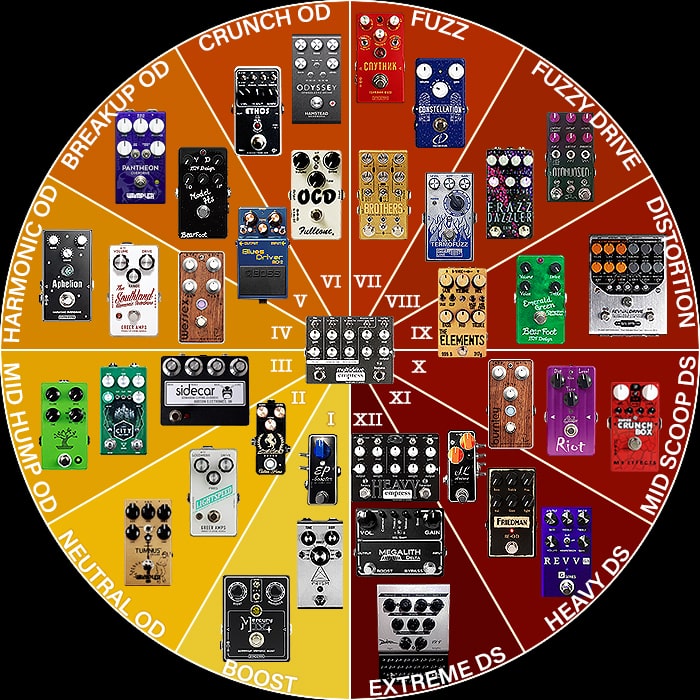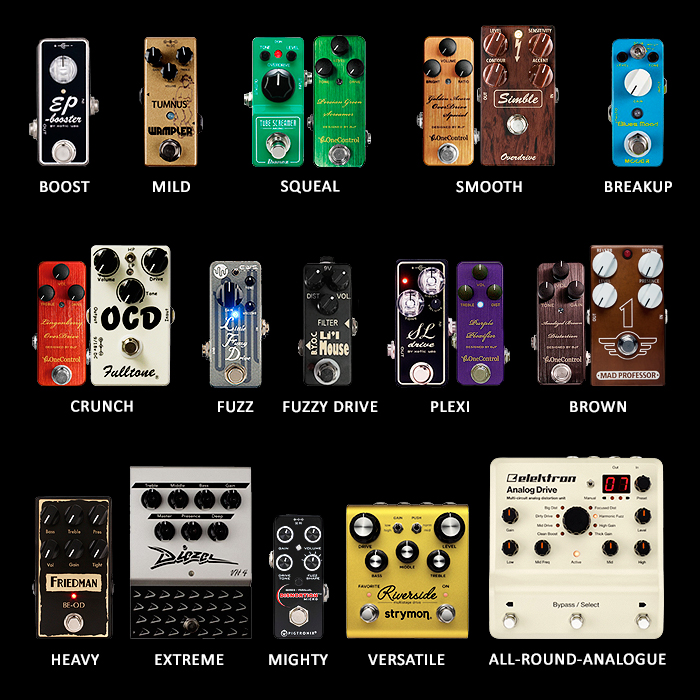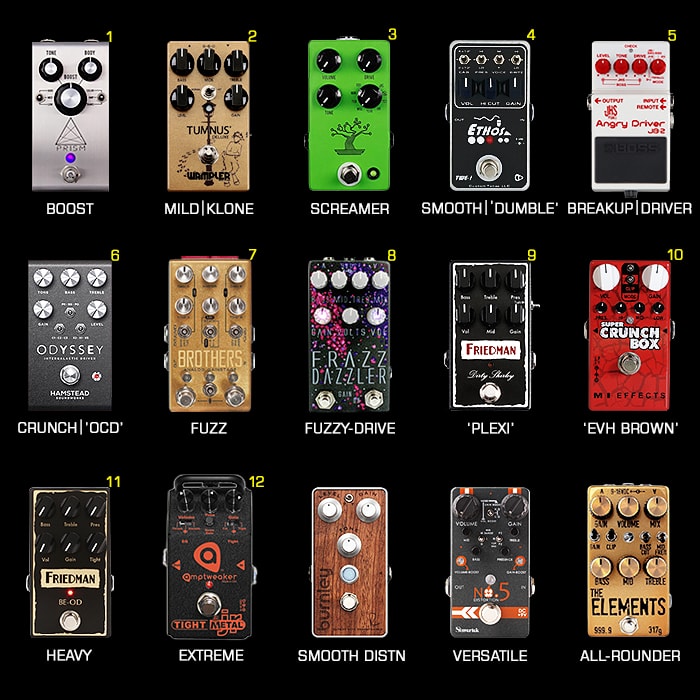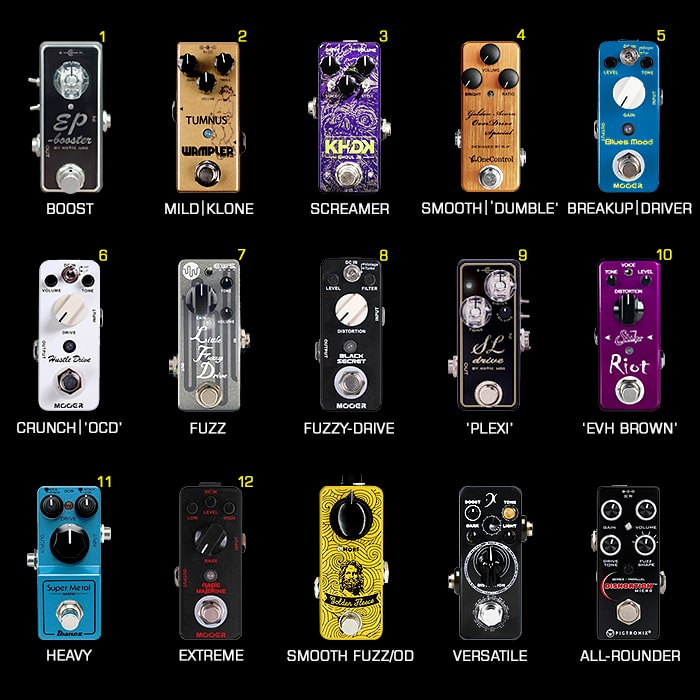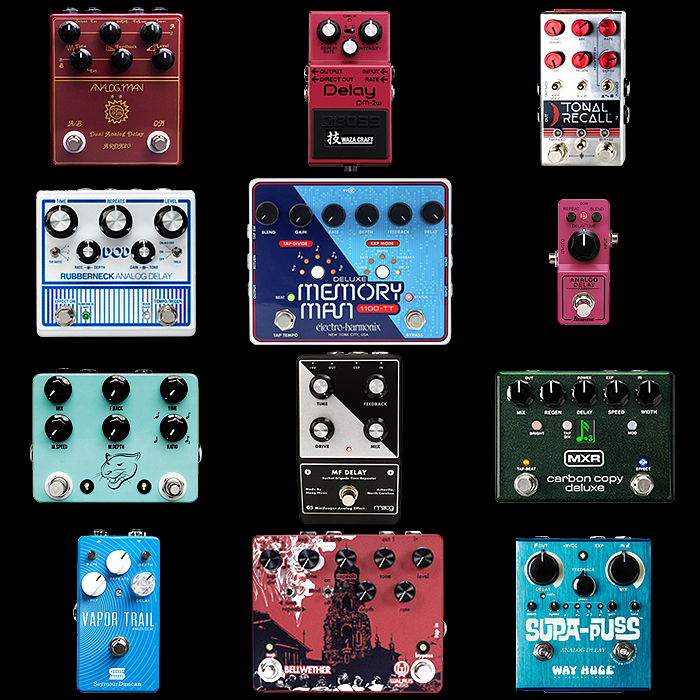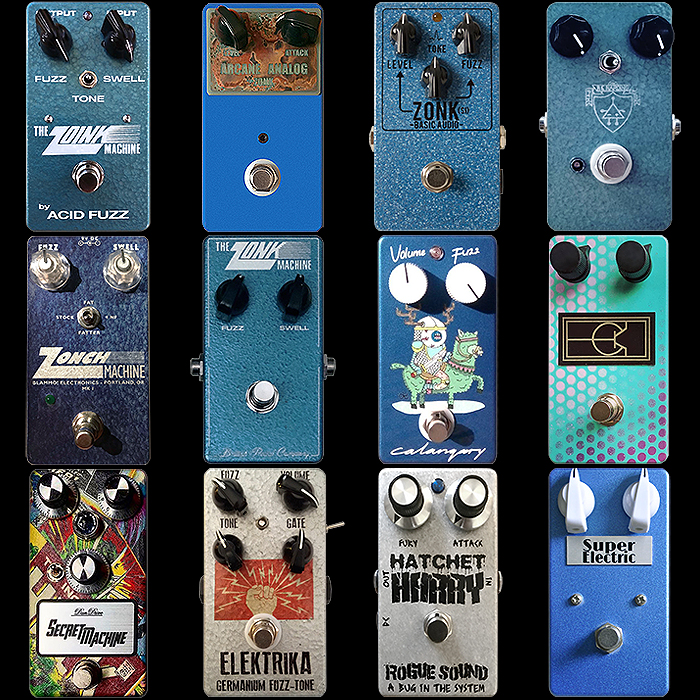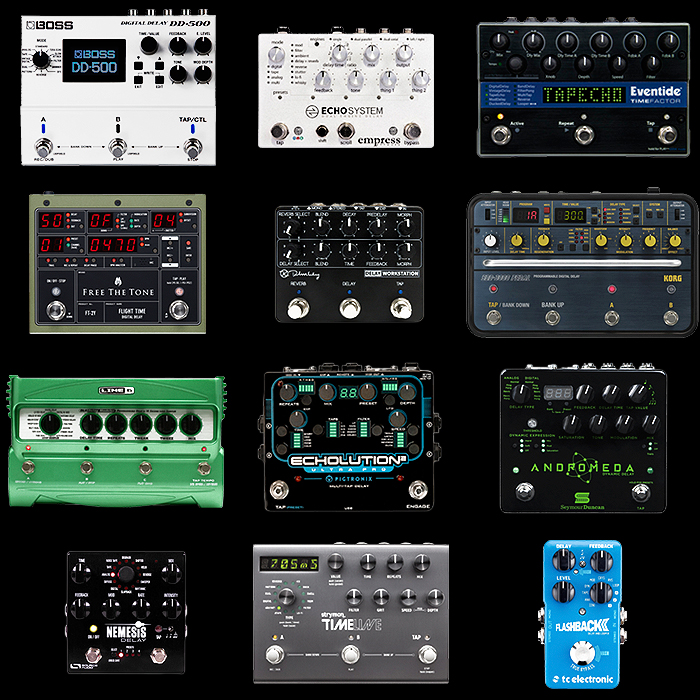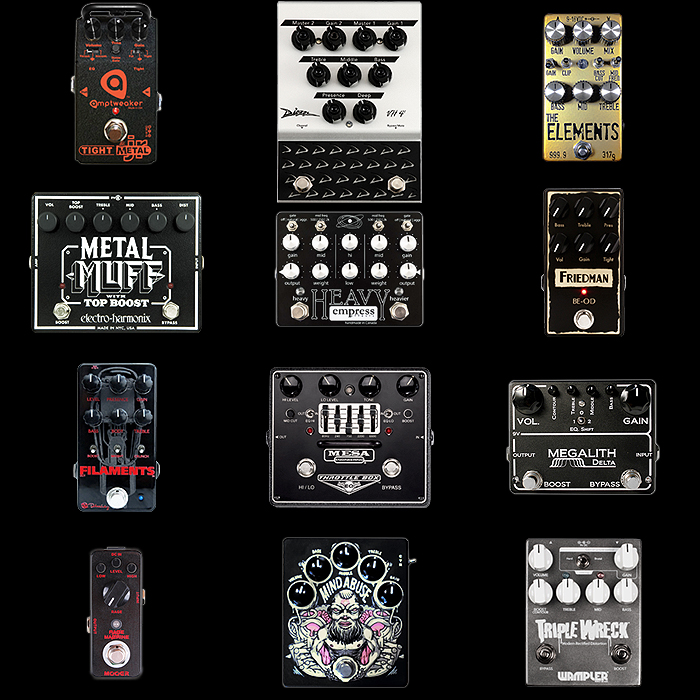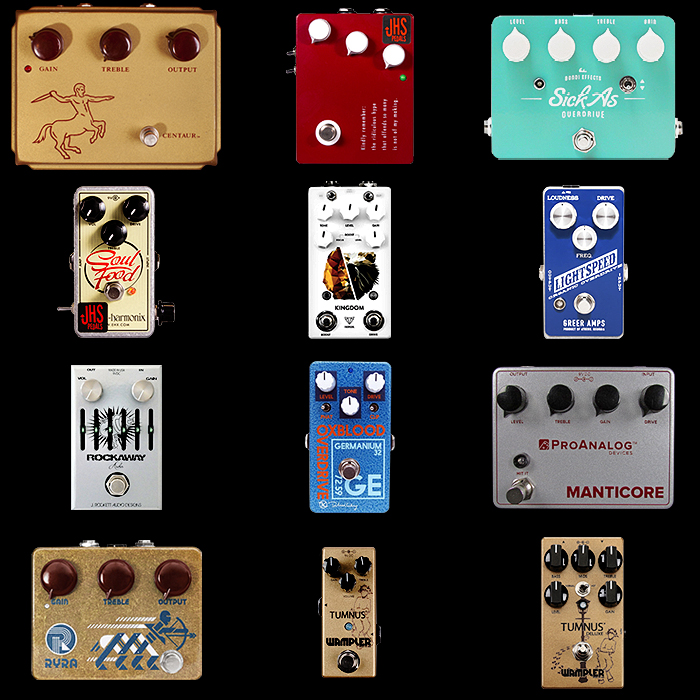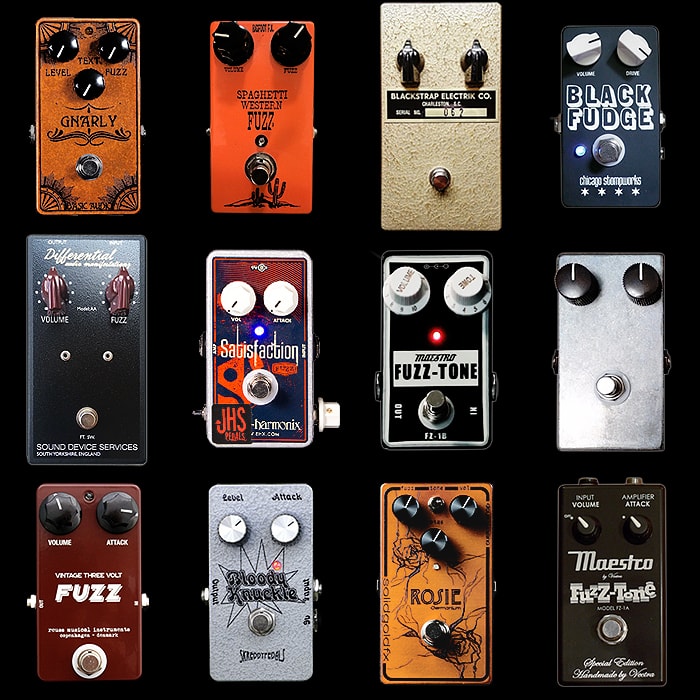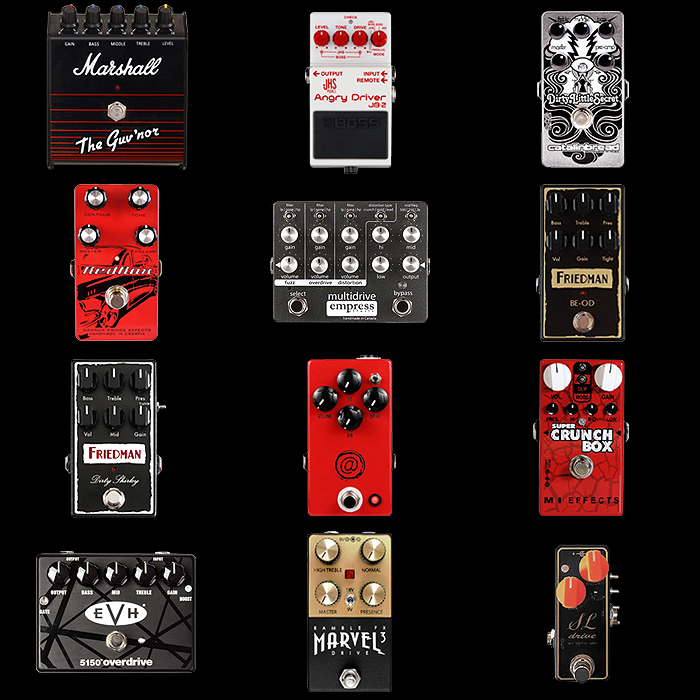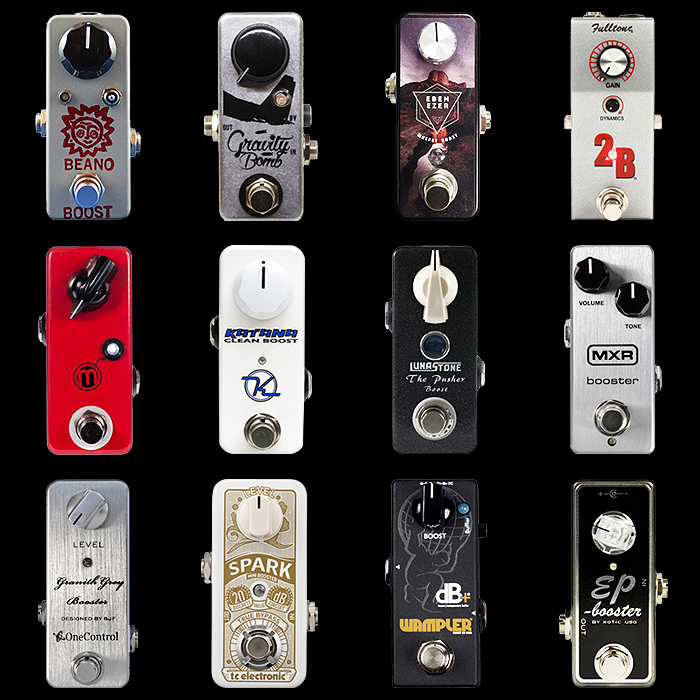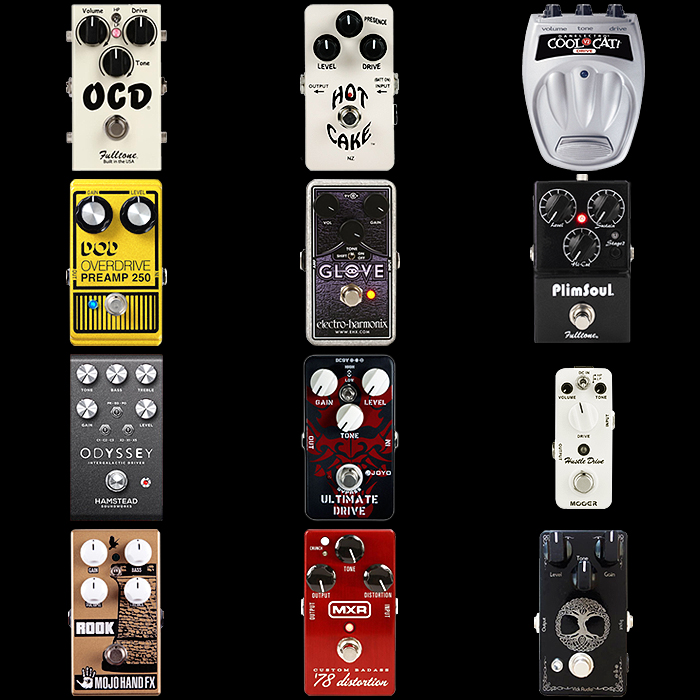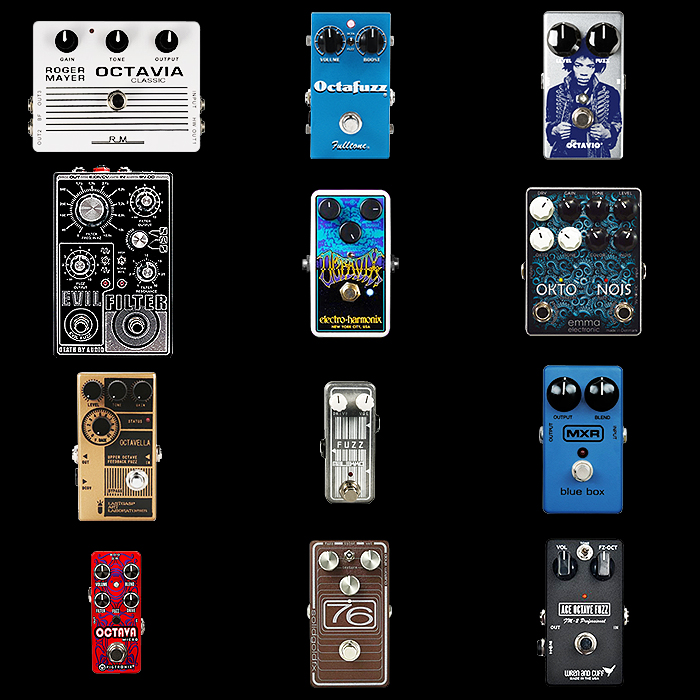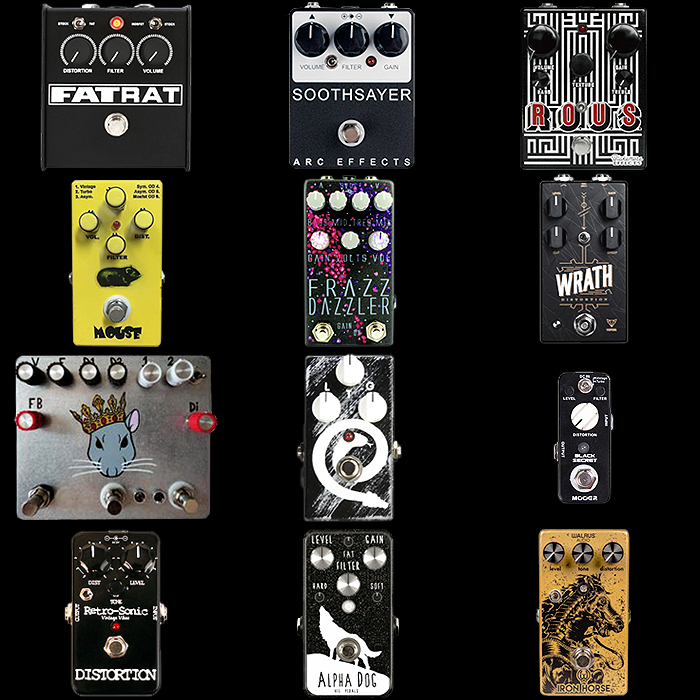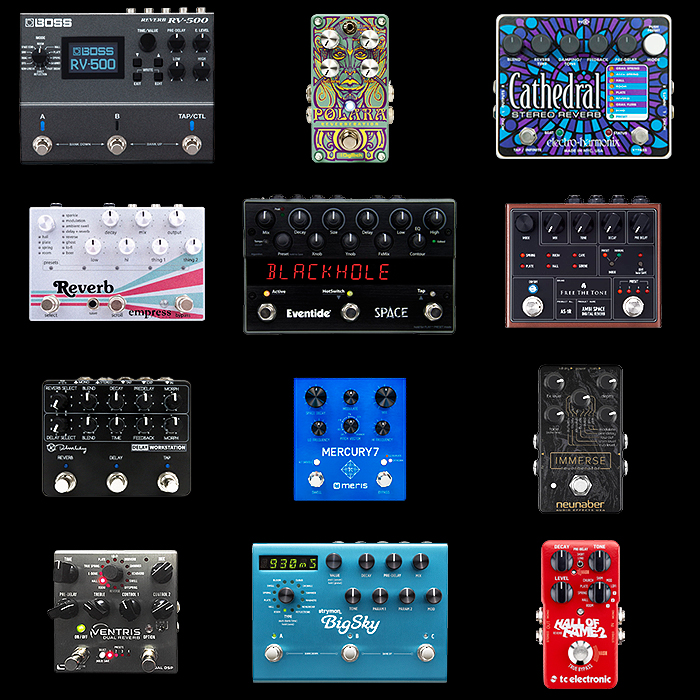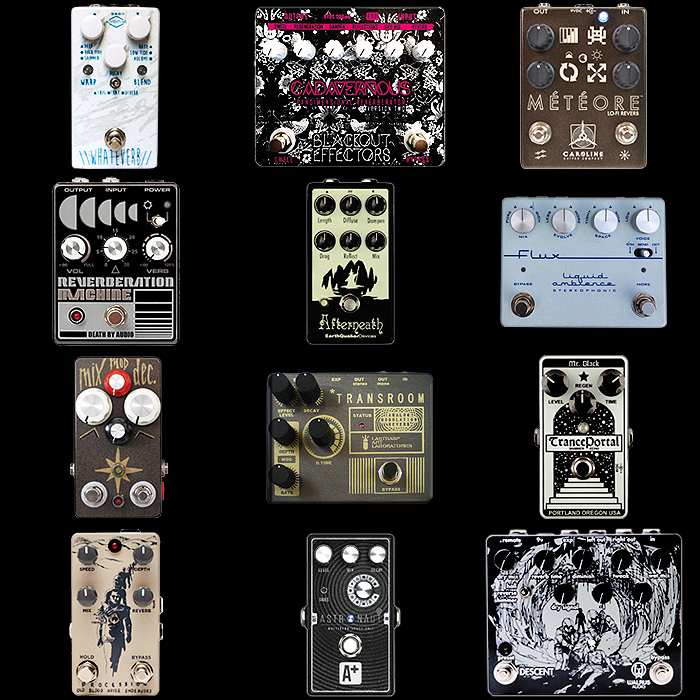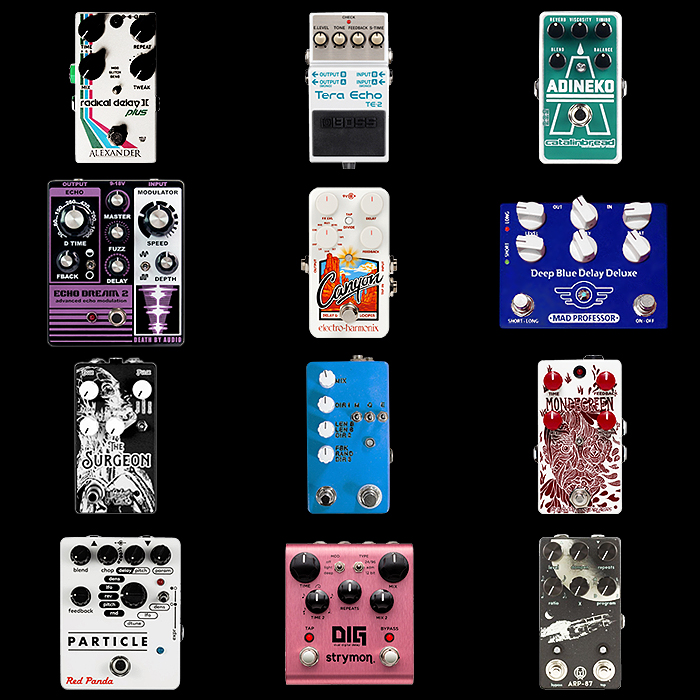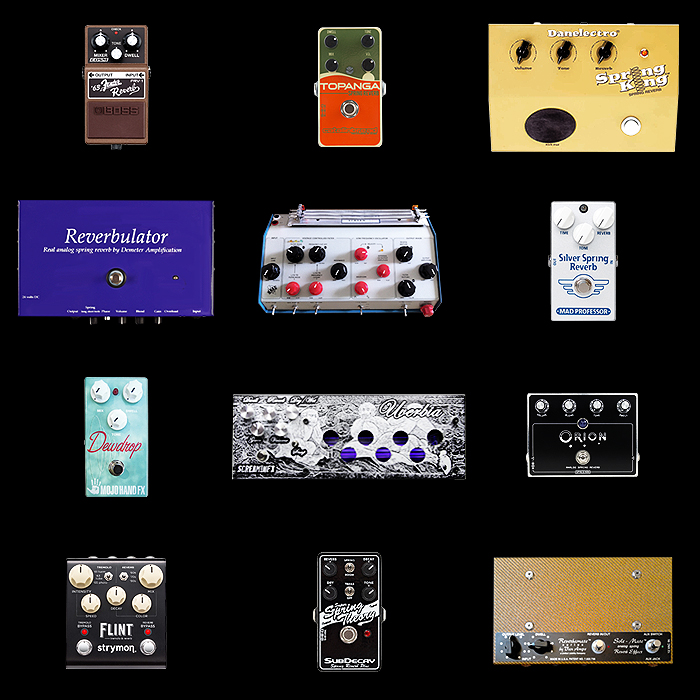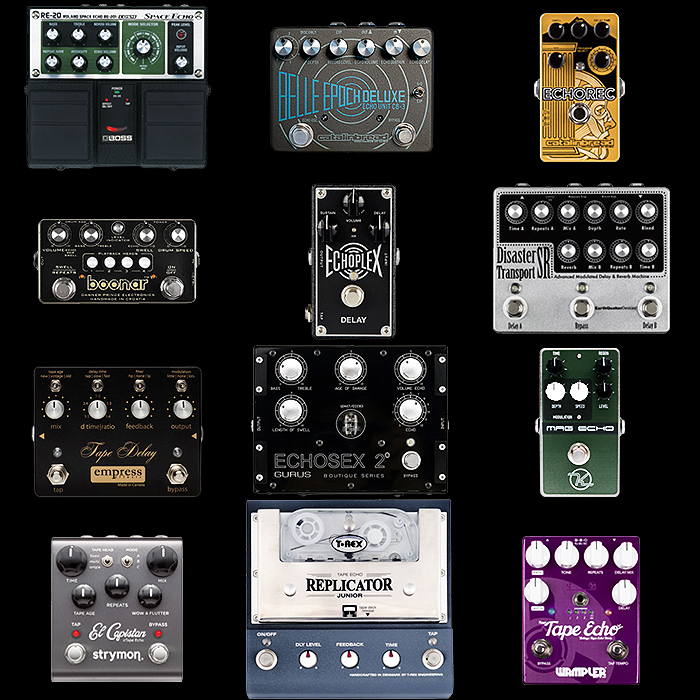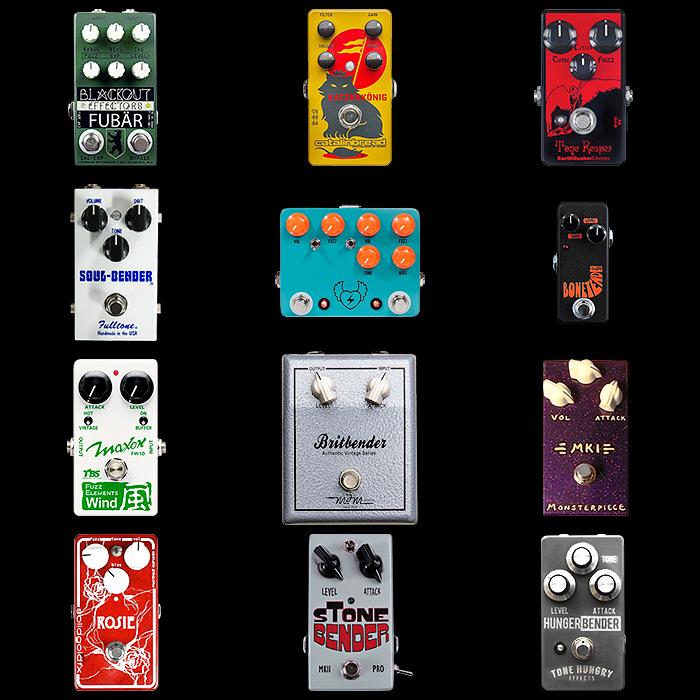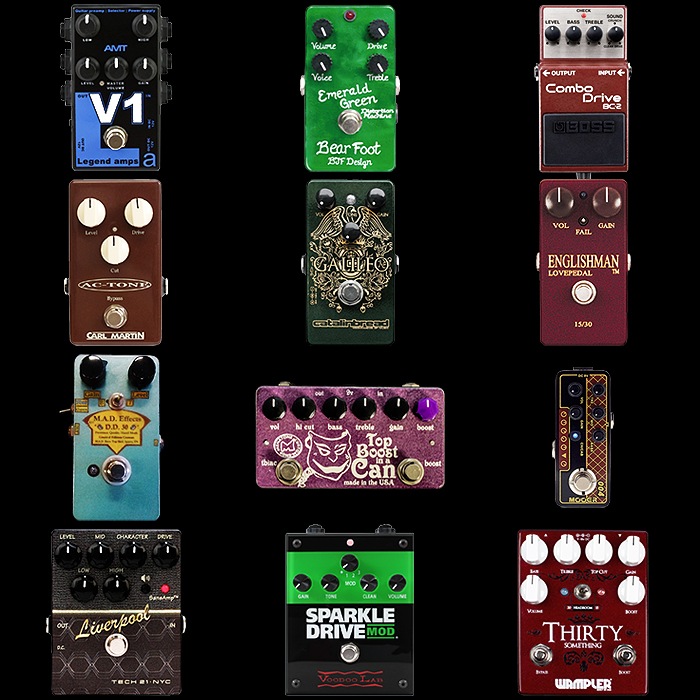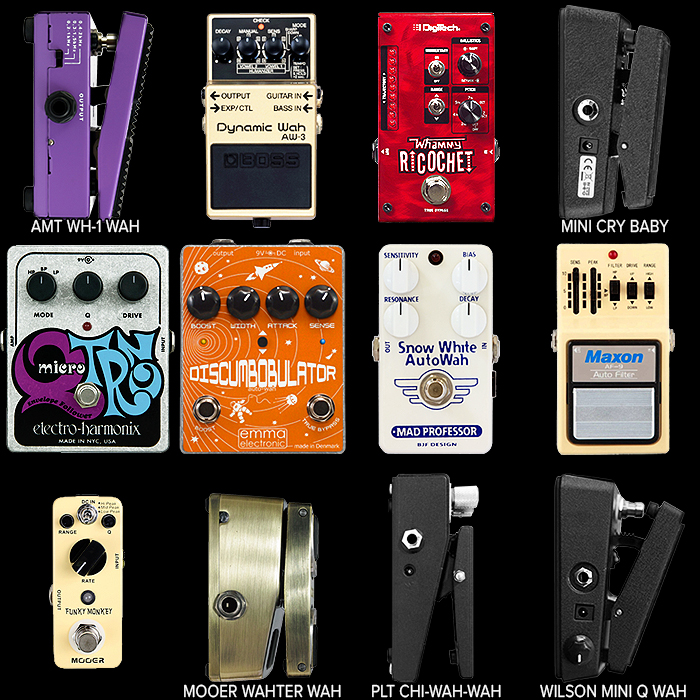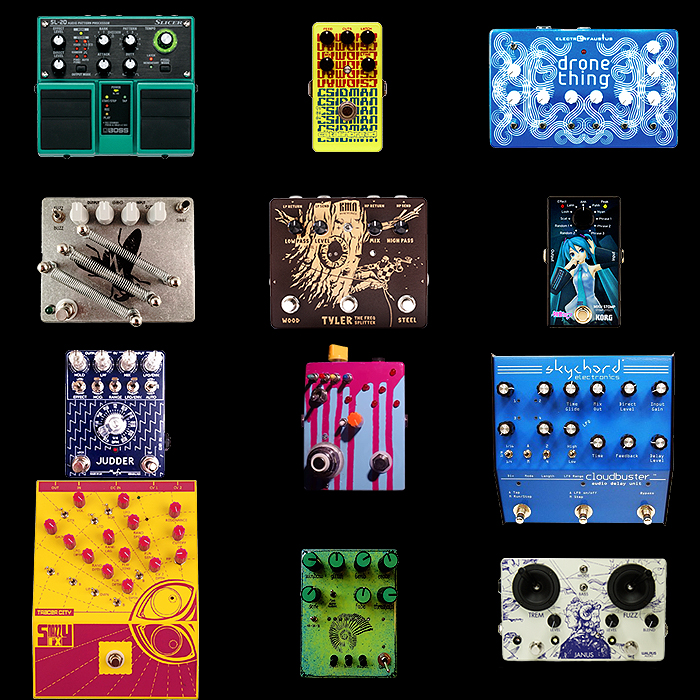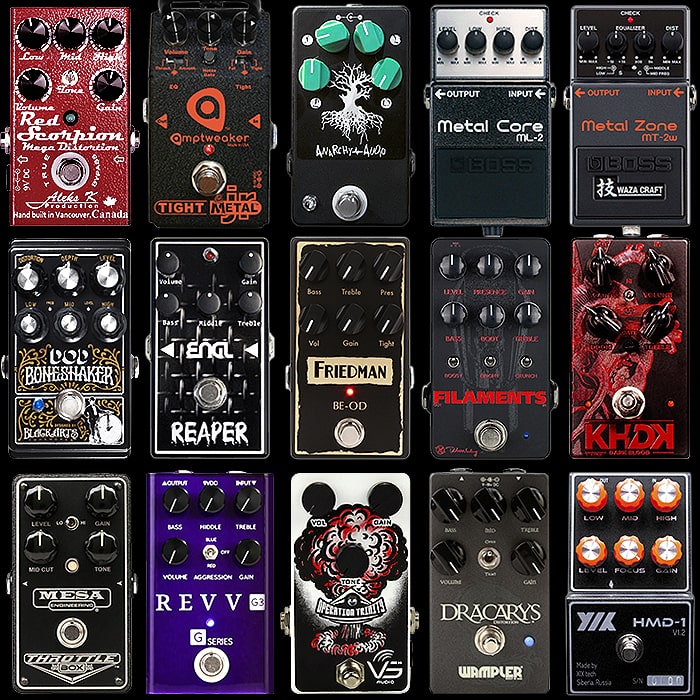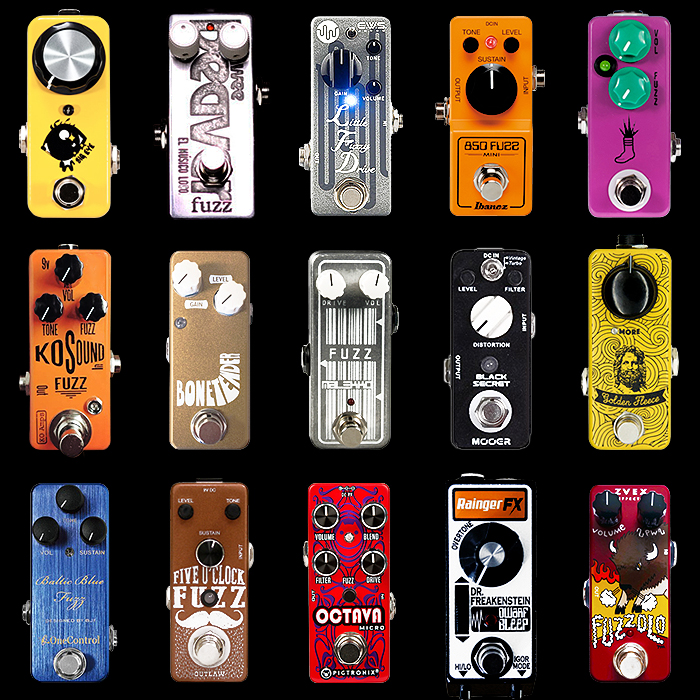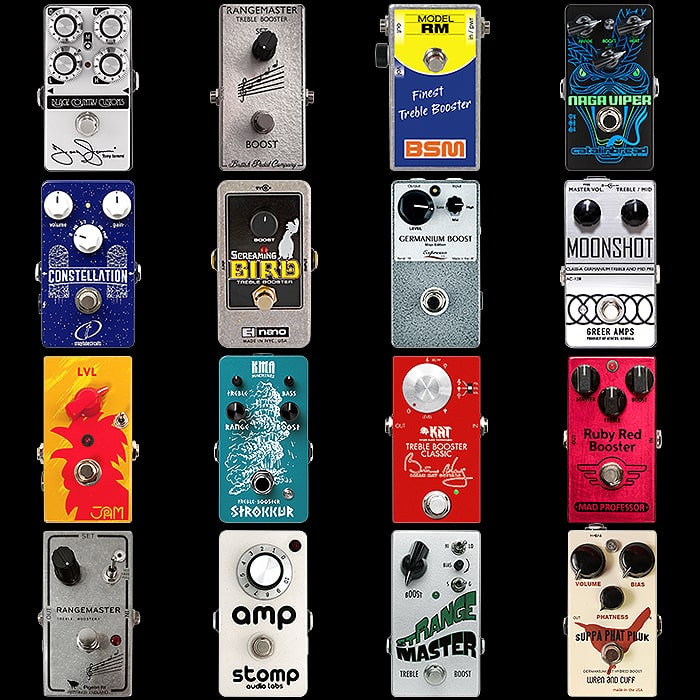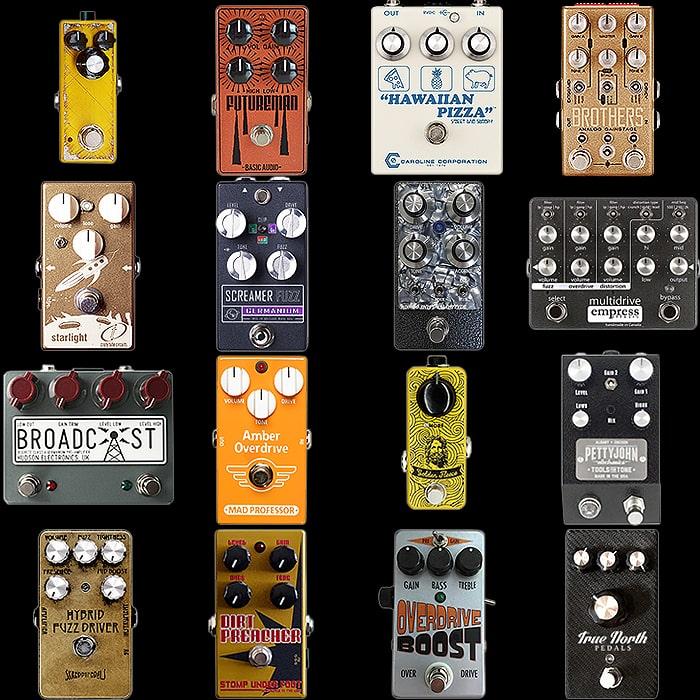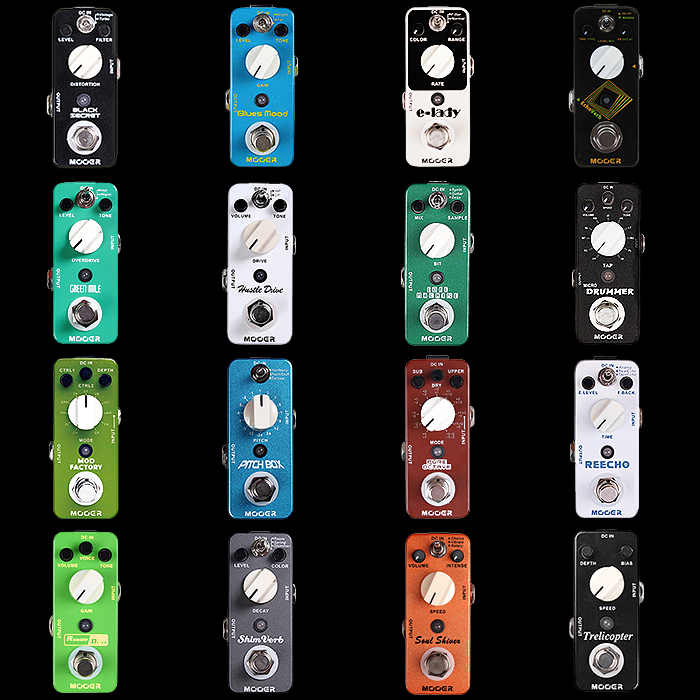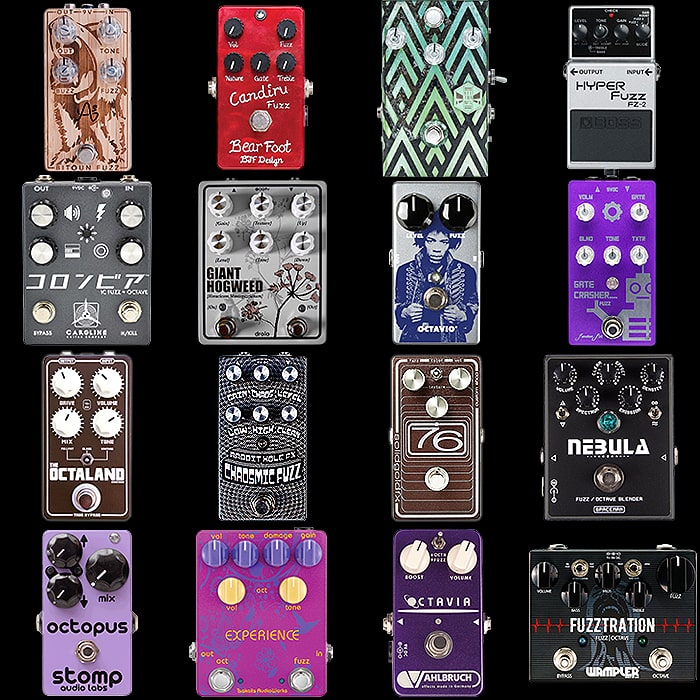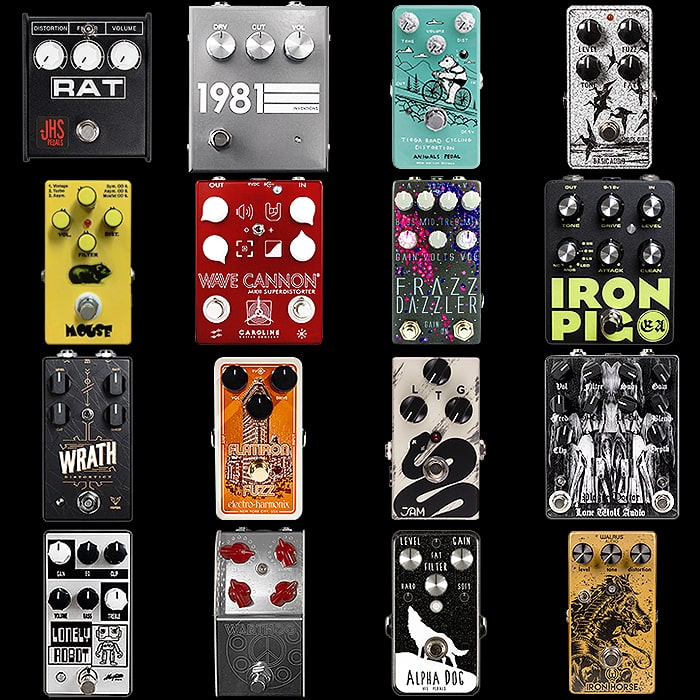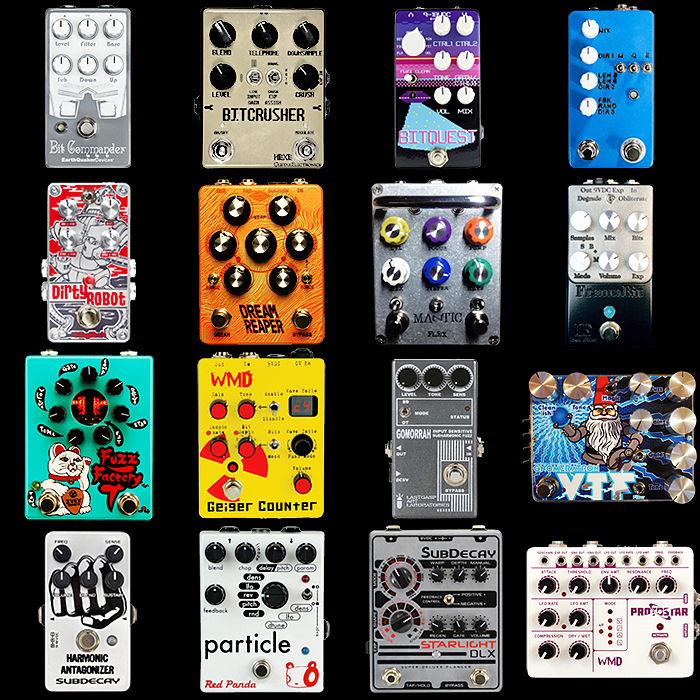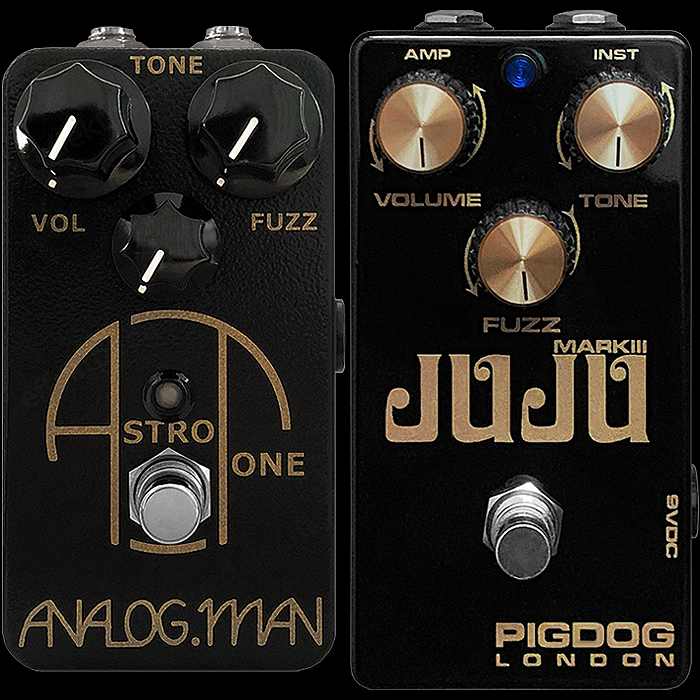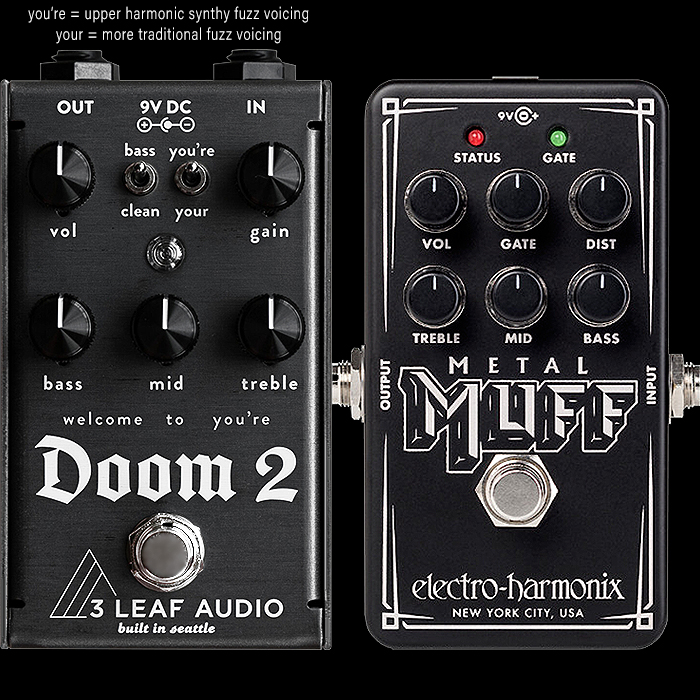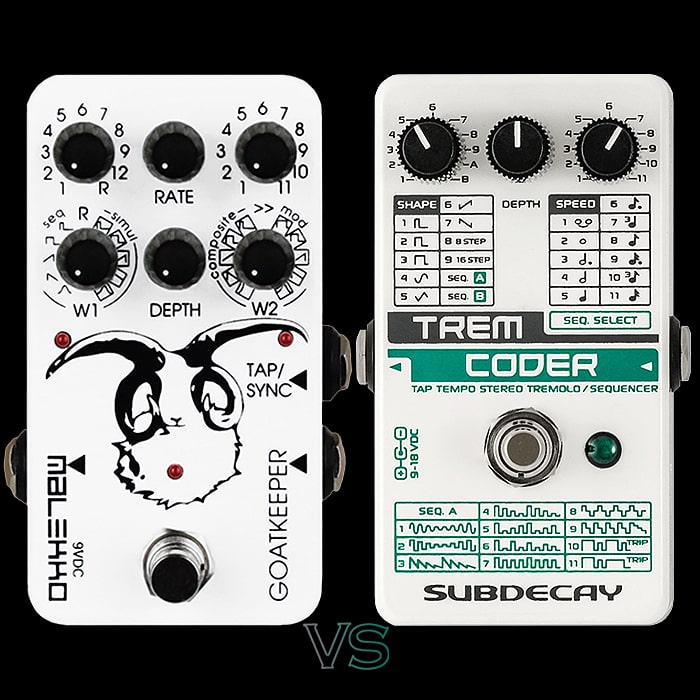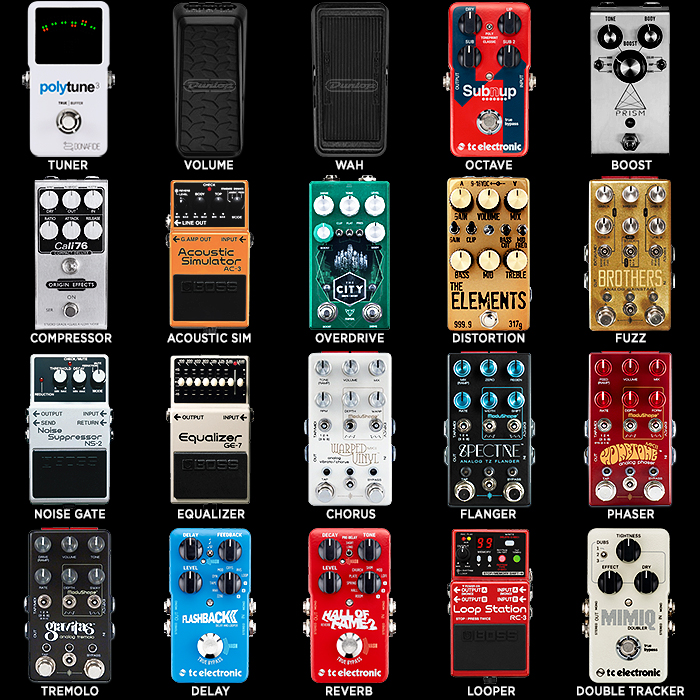18 of the Best Fuzz Pedals for Your Consideration
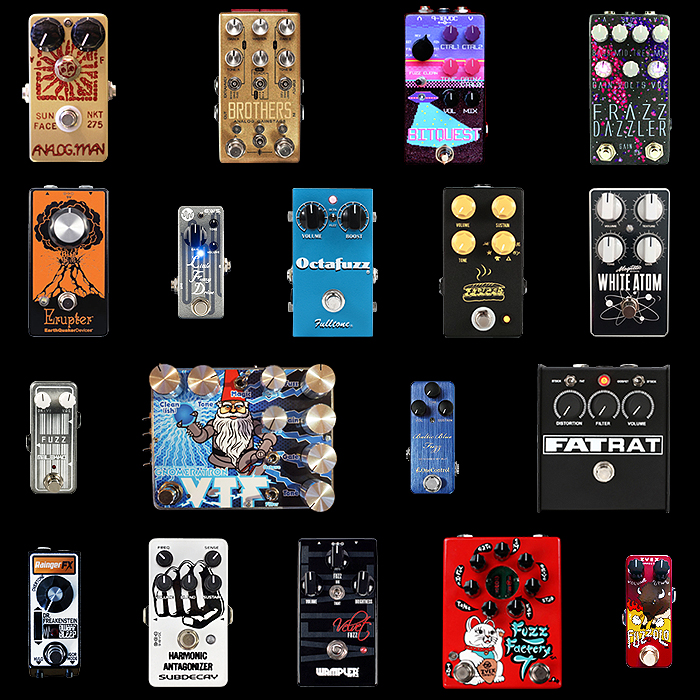
When I got back into guitar I had some foolish odd notion that I did not like fuzz, and would only concentrate on Overdrive and Distortion sounds. Yet I soon realised that many of my favourite saturation sounds are in fact fuzz-based, and that fuzzes can be used in a variety of ways and in a number of different voicings. There are several different categories of fuzz from smooth warm vintage, through octave fuzz, fuzz-distortion (Muff | Rat), velcro / gated fuzz, and on to super-saturated extreme-fuzz crackle and sputter. In this selection I’ve not specifically set out to cover all bases, but I pretty much have ended up doing so anyway - from super-sonic mini fuzzes to highly feature-rich flagship fuzz-workstation pedals and everything in between.
I could have included a couple more of my existing pedals in here too - my Empress Multidrive has a Fuzz Channel, but I use that to enhance and add texture to the Overdrive and Distortion voicings - so in that instance the fuzz is used in a supporting / auxiliary role. There is also a high saturation fuzz voicing achievable on the Strymon Sunset by diming the hard-clipping drive and running a high Treble boost in parallel. So you could say that there are currently 6 Fuzz-type pedals in my chain already.
If you scanned through my 9 Mini Fuzzes article, you will know that I already have a sizeable wishlist for fuzz pedals - the most desirable of those are included here too - I could indeed have included the Bonetender in addition, as that is also significant. Aside from mini fuzzes though, there are a number of regular and larger ones I really like the look of including the Harmonic Antagonizer and White Atom. As for the two bigger workstation pedals featured here, I fancy they may be too fussy for me - I hugely admire what you can do with both of them, and I’m still kind of in awe of the McSpunckle Gnomeratron, I’m just not sure I would ever get decent usage out of it. If you are an extreme noise player - then sure you will find some unique and interesting flavours there, but you can equally get very unique and interesting flavours out of the Antagonizer and Rainger Freakenstein. There are several other pedals I could also have included here - like the Lastgasp Gomorrah or Super Oscillo Fuzz; but in the end I felt that this selection of 18 was perfectly representative enough.
I still feel that the Pro Co Rat enclosure is too large, and could easily be rendered as a more regular-sized pedal. I see an increasing trend for players to be more adventurous / experimental and wanting to have larger pedalboards with more effects. so I still don’t understand why brands like EHX and Orange keep churning out pedals in those over-sized medium enclosures. For Strymon I think it’s mostly justified by the larger feature sets they provide, and the larger amount of dials and controls they deploy. For Rat pedals which have just 3 dials and 2 toggles - you should be able to accommodate that within a regular enclosure - just look to my perennial favourites Chase Bliss and Foxpedal as to how much functionality they can accommodate in a regular enclosure - I would probably buy a Fat Rat if it was regular-sized - the current size is the same as the Strymon Riverside and Sunset - but only with a fraction of those features - I feel some of these makers need to wise up and modernise!
NOTE - to get the best out of many of these pedals you need to dime the gain+tone dials on the pedal and then use your guitar volume to control the saturation and tone - this works particularly well with the Sun Face and Octafuzz for instance.
Pedals are pictured and listed alphabetically by brand name, this current selection ranges in price from £89 to $469.
Analog.Man Sun Face - from $185
This beautiful warm and expressive fuzz is based on the classic Dallas Arbiter Fuzz Face circuit with original germanium or silicon transistor options. The one pictured above is the original KT275 germanium red dot version with bias dial in addition to Volume and Fuzz (saturation) dials. There are a load of different varieties available - each number variation references the main transistor onboard. The BC variations indicate silicon (as in the video demo) - which has slightly more gain, but is also more prone to AM radio interference as those transistors are extremely susceptible to radio waves. If you're after a classic vintage fuzz then you can't go wrong here - you just need to know which transistor you are choosing, and what its tone profile is. The KT275 has an additional $75 premium as the component is so rare - meaning the pictured version is around $260. Most of these pedals don't have an LED on indicator or the external bias dial - so you need to be 100% sure on exactly which option/s you have specified and which pedal you are getting.
Chase Bliss Brothers - £349
This is in fact a dual drive pedal with separate IC and JFET circuits and three separate voicing options per Channel - Boost | Drive | Fuzz. In many ways this is similar to the Strymon Sunset apart from the inclusion of Fuzz voicings. I use this pedal mainly as a Fuzz pedal with drive and boost used to support the fuzz voicings. On my Empress Multidrive pedal I use the fuzz voice in a supporting roll - to add texture to the drive. For the Brothers, the Fuzz takes centre-stage and I use the other voicing to remodel the core Fuzz tones. This is an enormously versatile and capable pedal which allows you to run channels in serial and parallel - for the widest possible tonal pallet. It's pricey for sure, but so capable - there is nothing close to it at this pedal-size - if you can afford them - the Chase Bliss Audio pedals are in a class of their own really.
Dr Scientis Bit Quest - £229
This is one of the most amazingly versatile pedals you can buy - it kind of sits under the bitcrusher category, but it's really a fuzz modulation pedal - having 8 different effects to combine with the fuzz voicing - Flanger | Envelope Filter | Bitcrusher | Reverb | Notch Filter | Ring Modulator | Octave Pitch Shifter/Harmonizer | 1 second Digital Delay. This pedal is literally fun for days and has so many different uses - some of the effects can be a touch tricky to dial in though!
Dr Scientist Frazz Dazzler - £229
I'm a huge fan of Pro Co Rat style fuzz-distortion sounds - and this ramps that kind of sonic pallet to the ultimate extreme. 'Frazz Dazzler' is quite an apt name really as you get amazing high frequency static electricity frazzle / sputter here - with the added bonus of a separately configurable gain switch for even more body and grunt. For those who like the Rat kind of sound but want something even chewier and more extreme - then this is really worth a look-in. It is currently my 'Rat' pedal of choice.
EarthQuaker Devices Erupter - £155
This is EQD's 1-dial Fuzz equivalent of its Acapulco Gold drive pedal. The one dial ads gain as well as adjusting bias and tone as you sweep round - going from relatively smooth to screaming crazy sounds. These EQD pedals are the antithesis to much of what's out there at the moment - they of course need to have amazing DSP to ensure a tonal sweet-spot through the dial and through the range of pickups / guitars and amps applied. This is on my wishlist - it sounds and works great.
EWS Little Fuzzy Drive - £120
This used to be my main fuzz - it's voiced slightly more towards the fuzz-drive / Muff spectrum - particularly in 'fat' mode, but you can dial it down for some smoother vintage tones. This uses an op-amp for a thicker tone overall - and it's pretty even-tempered. You get Tone | Volume | Gain dials and the aforementioned Fat mode toggle. It's a really great and versatile fuzz where it's diminutive size only enhances the positives - highly recommended.
Fulltone Octafuzz - £145
I was considering getting an octave fuzz for the longest time, and this was going to my number one choice for that- until I spotted one of the few remaining Malekko Omicron Fuzzes in the wild - which is a rather good octave fuzz too at a mini-size. Many of the pros rate this Octafuzz version though - if you're looking for that vintage Hendrix octave fuzz sound - you get just two dials - Volume and Boost - you can tweak the latter as a kind of bias / texture knob, there is also an octave | fuzz toggle which allows you to play just plain fuzz too. The only proviso here is that this takes a centre-positive power supply, regardless of that, it's well worth considering if you're looking for that classic octave fuzz sound.
JHS Muffuletta - £219
A somewhat controversial pedal of sorts but an essential one for all you 'Big Muff' fans - this gives you no less than 6 classic Muff pedal sounds in a single enclosure - The Civil War | The Russian | The Pi | The Triangle | '73 Rams Head | JHS Special - all voicings are great, although I mostly alternate between Civil War, Triangle and JHS voicings. In addition to the 6-mode selector you have Volume | Sustain | Tone dials. This is currently my main Fuzz pedal of choice - having bumped the EWS - I love both, but this one obviously gives me more tonal options. JHS are often criticised for cloning and duplicating existing pedals - where it's often just a matter of using specific components within very plain vanilla circuits which in and of themselves have no copyright. Electro-Harmonix had years to bring out their own version of this, and they still have not. EHX also tends to favour the larger mid-sized and above pedal enclosures - where this is a compact regular size - win-win for me!
Magnetic Effects White Atom - £109
Often tricky to get hold of in the UK, but a very reasonably priced highly versatile fuzz with Volume | Texture | Tone | Gain dials - it's the Texture dial which is the special sauce here - a kind of bias dial - allowing you to to go from smoothish vintage tones to really gnarly frazzely tones - not quite Frazzle Dazzle territory, but a similar flavour. This one is on my wishlist and I will snap one up if I can find one reasonably priced locally. Nick Jaffe loves his - as you can see in the above video.
Malekko Omicron - c£115 new (discontinued)
I got one of the last ones of these currently available in the wild - the pedal was discontinued a couple of years back, but remains one of the most versatile fuzzes you can get - particularly if you are after a Univox Super Fuzz-based octave-up fuzz. I bought a barely used one recently on Reverb.com - just waiting for the customs note from the Royal Mail to arrive to complete the delivery. This has a Germanium Diode -based circuit with two dials - Drive and Volume, and interior dip-switch with 3-mode tone switch which kind of boosts high, mid and low frequencies - although the bottom toggle alters the voicing quite significantly too. It really sounds immense - you have no awareness that all the sound is being generated through such a diminutive pedals. It's a mystery why these were discontinued, as they really sound great.
McSpunckle Gnomeratron VTF - $267 new (discontinued / special order)
This is one of the most feature rich and gnarly fuzz pedals ever created - hand-built one at a time by Mr McSpunckle himself and comes in various configurations with up to 10 toggle switches and 8 dials. You can clip and tweak so many different parameters here that you may struggle to make sense of it all - and with pedals of this sort, you can fairly easily dial in something horrible sounding as well as something unique and amazing. There used to be an order form on McSpunckle's Etsy store, but the listing now just says closed. You can see that they are obviously complex pedals to assemble - and there seem to have been delivery delay issues etc. I guess if you're still interested, you need to give it a couple of months or so to settle and then hit up McSpunckle on his Facebook page with an enquiry - he may still have a couple of these sitting around / and or parts to spare. I think if experimental fuzz is your thing - then this is an amazing pedal, for most though it's a little over-complex. Great to see that these sorts of pedals exist. I was considering this for a while, but have decided to go down a more simplified route for the next couple of years at least - I may revisit this thereafter and see what my mood is like - amazingly versatile pedal though and incredible sounding - as played by Dennis Kayzer above.
OneControl Baltic Blue Fuzz
Another one of the great mini fuzz pedals I have covered previously - it has just 3 dials here - Tone | Volume | Sustain, but you can tease out the sounds of 3 of the classic EHX Muff Pedals - π (Pi) | Δ (Triangle) | Ram's Head. Brett Kingman shows how it's done in the above video. This is yet another pedal on my growing wishlist - it's kind of 1/2 a muffuletta - useful as a backup and for when space is tight - there may be times you prefer to slot in 2 minis over a single regular pedal.
Pro Co Fat Rat - £229
I have always loved the Pro Co Rat sound, but never been keen on the relatively over-sized enclosure - also the regular version can have relatively low output - which is retained in my mini BYOC Lil' Mouse clone, but beefed up with a 'Turbo' toggle in the Mooer Black Secret clone. The Pro Co Fat Rat has two clipping dials for a variety of different voicings - which makes this my choice pick of the originals - the newer pedals allow you to easily clip in the actual original LM308N op amp too - so if you prefer that sound you can have it - with additional clipping mode options added via the more versatile enclosure. My current choice though for the Rat-style of fuzz-distortion is the phenomenal Frazz Dazzler from Dr Scientist. But props to Pro Co for persevering with a somewhat random op amp chip to produce such an excellent soundstage originally. There are lots of really decent clones out there nowadays, so if you're buying an original Pro Co Rat you should at least go with a Turbo or Fat version! As I say in the intro - I find the enclosure somewhat oversized and therefore prefer a clone in a smaller enclosure - with more output, and enhanced tone-sculpting options.
Rainger FX Dr Freakenstein Dwarf Bleep - £119
Rainger's Mini Freakenstein takes your fuzz into even weirder territory - with all manner of smart expression effects options via the included proprietary expression pressure pad - 'Igor'. This is a truly freaky fizzy fuzz with pitch-shifting and oscillation added for good measure. David Rainger is a UK-based pedal maker so easier for me to get a hold of than the McSpunckle - and somewhat simpler to use, but gives you a great variety of relatively unusual fuzz sounds in a similar manner - although not quite as squelchy as the Gnomeratron.
Subdecay Harmonic Antagonizer - £159
Yet another fuzz on my wishlist - this gives you sweeping oscillating harmonic fuzz sounds - superb for electronic / dubstep kinds of basslines and lead-lines. Sounds wonderfully full-throated and is really versatile from just 5 dials - Frequency | Sense | Volume | Blend | Sustain - Dennis Kayzer shows you how it's done in the above video.
Wampler Velvet Fuzz - £169
Brian Wampler really knows how to get the best out of his pedals and spends more time than most tweaking and fine-tuning until the playability and sensitivity is absolutely perfect. I was at one stage trying to get hold of the now discontinued Leviathan pedal which is a little more gainey and modern. While the Velvet is closer to those smoother sounding vintage / classic fuzz sounds of old. I own several Wampler pedals, and you can be sure that they always deliver the goods. You may prefer the sound of another pedal for a particular type - but that largely comes down to a voicing preference - Brian's pedals have a wonderful tangible feel when you play through them - they are really articulate and responsive which can make a huge difference. If you are looking for a fairly vanilla-style smooth and warm vintage fuzz, then you can't really go wrong with this. For my own needs I slightly prefer the versatility of the Dual Channel Chase Bliss Brothers - although these two are very different things and the latter is more than twice this one's price. I still consider adding this one every now and again - my mood shifts though and I change my preference for another style of fuzz pedal or other type entirely. It also does depend if I come across a well-priced version of this somewhere along the line - possibly a mint or near perfect used one.
Zvex Fuzz Factory 7 - $469
Apart from Dunlop (Fuzz Face), pedal-maker ZVex (Zachary Vex) is probably the best associated with the manufacture of high-quality fuzz pedals across a fairly broad range. I feature two of his pedals here - this flagship monster pedal which is the most expensive on this page, yet still not as feature-rich as the McSpunckle - but you do get a variety of rare and precious clipping diodes - for several different voicings. Fuzz is almost always about component choices - whether Germanium | Silicon | Op-amp -based - some of the more vintage of these are out of production or only available in tiny quantities - which inflates the price somewhat. If you want an all-action fuzz - then it's probably between the Fuzz Factory 7 and the aforementioned McSpunckle. The other ZVex here is the mini one which is covered next. Of course the most popular ZVex fuzz is likely the standard Fuzz Factory Zvexter which retails at around £169 - and is yet another pedal on my wishlist - as is the Fat Fuzz Factory at £189!
Zvex Fuzzolo - £89
As touched on previously, I am very unlikely to acquire the McSpunckle or the flagship ZVex Fuzz pedal - the Fuzz Factory 7. This pedal though is another one of my favourite minis on my wishlist - some internal dip-switches for tone tweaking, but mostly about the Pulse Width waveform button which takes you from fairly smooth to rather gated, stuttery and gnarly noise - in the best fuzz tradition. Bu rights I should have acquired this one already as its already hit the pricing sweet-spot - I've just had other pedal priorities of late - but I will likely snap this one up soon enough.
As a summary then, I have 4 of these pedals in my active chain already with a number of mini alternatives on hand for occasional swap-out or addition. I also have around 7 of these on my active wishlist - in particular the 3 minis featured that I don't already own (and a Bonetender if I can get one relatively cheap). I constantly monitor pricing across Reverb, Ebay and the various Music Stores in the UK, Europe and USA - waiting for these to hit the sub or near £100 sweet-spot. So minis come first, then the Harmonic Antagonizer, EQD Erupter and Magnetic White Atom. In fact depending on my current prevailing mood I will probably look to get either the Fuzzolo, Freakenstein or Antagonizer next...
Addition! - Old Blood Noise Endeavours Haunt - £179
Another fuzz pedal which is on my wishlist but I somehow forgot to include in this list is Old Blood Noise's very aptly named 'Haunt'. A spooky, rip-roaring velcro / gated style fuzz with a really distinctive edge. It's funny how initially I did not seem that keen on fuzz, but recently I've been hearing fuzz on all kinds of records and realising how much I love this kind of sound. St Vincent uses it to great effect, as do NIN and Muse - it's just everywhere in its various different guises. There's no doubt that this is another great pedal worthy of your consideration.
Addition 2! Foxpedal Defector Fuzz - £199
I've actually had my eye on this one for a while - it's another Muff-style fuzz - this time with 2 clipping modes beyond the classic 4-stage transistors - toggle left for Silicon-clipping and right for LED-clipping or leave in the middle for full power. There are two footswitches here also - the right on/bypass one also has a feedback hold mode, while the left one activates pre-gain boost. You then have Level | Tone | Fuzz and a really clever Mids dial for boosting or scooping those key frequencies. I will be switching this one in for the Muffuletta for a while - we will see if it becomes a permanent fixture. I am already a big fan of dual-footswitch compact pedals, and while Foxpedal aren't quite at Chase Bliss Audio levels of innovation yet, they still do mighty impressive things, it's nice to add this one to my existing 'The City' pedal from that same maker.
Addition 3! - Stone Deaf Fig Fumb - £170
In doing my preferred enclosure size pedals per key type article, I came across two further really handy fuzzes - the truly big box Amptweaker Tight Fuzz Pro, and this Stone Deaf Fig Fumb parametric EQ fuzz. The latter handles everything from smooth to searing tones, and has a separate noise gate footswitch to tame some of the unrulier elements at high saturation. This is now likely my next fuzz pedal acquisition - the enclosure is more medium size than compact, but this one sounds really great!




















